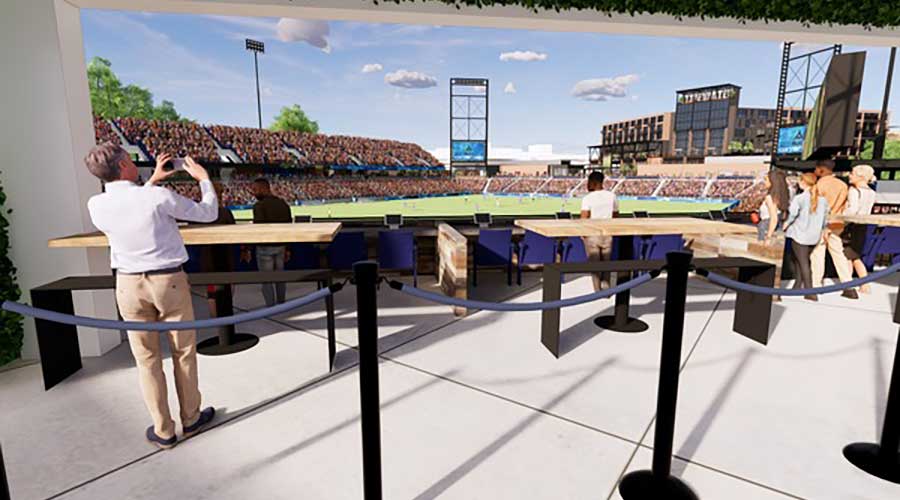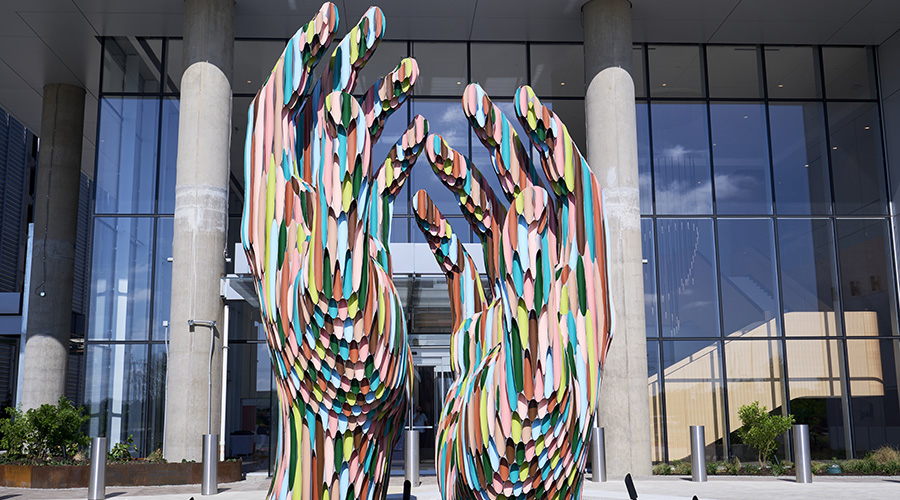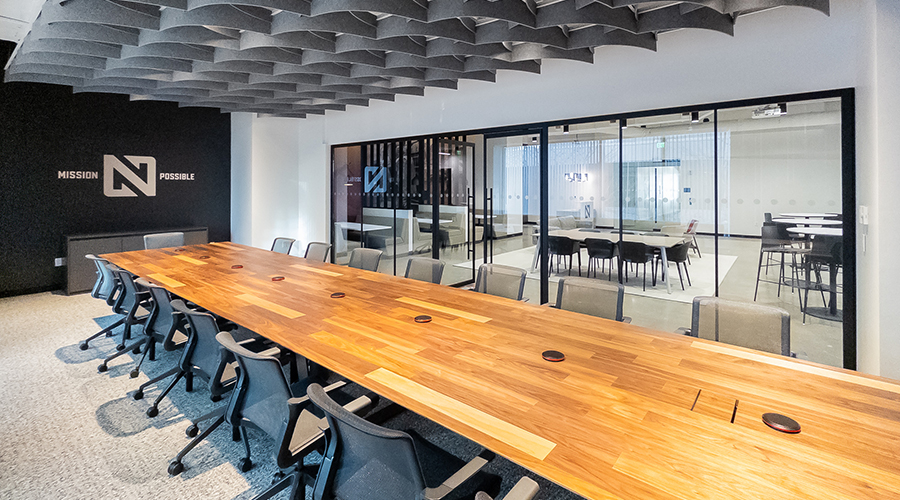Funding for the Next Generation
Oregon school district offers road map to secure financing and build for the future
By Chris Matt, Associate Editor
When Tim Woodley worked as a construction manager building public schools across the Pacific Northwest, he witnessed the challenges many districts face in securing funding for building renovations and new construction.
One district that defied the norm was the West Linn-Wilsonville School District just outside of Portland, Ore. The district hired Woodley’s construction-management company to monitor the work associated with a bond passed in 1997. Woodley was a senior program manager on the project, and as a result of the positive experience for both Woodley and the schools, the district hired him as its director of operations.
Now, more than a decade later, the district is continuing to put together a successful plan for establishing funding to support facilities and operations. Organization, communication, and long-range planning all contribute to the district’s mission of providing an infrastructure that facilitates the best possible learning environment.
Keys to Success
Many maintenance and engineering managers become so engrossed in the day-to-day operations of their facilities that they do not have the time or the resources to consider the big picture. A significant part of a department’s long-term plan involves funding for building renovations, new construction, deferred maintenance and other projects managers cannot accommodate with their operating budgets. To address many of those projects, districts present bond measures to voters in their respective communities.
Earlier in his career while overseeing construction of schools in various districts, Woodley quickly learned the value of planning and organization when preparing bonds. The West Linn and Wilsonville communities have a reputation for approving bonds — measures passed in 1979, 1988, 1989, 1992, 1997, and 2002 — and the school district’s approach is the key to success.
“I think you have to,” have a long-term plan, Woodley says. “I’ve built schools in other districts and knew the struggles they went through to get a bond passed. Year in and year out, school districts tend to focus internally rather than externally. There are no big-vision goals and things that excite a community.”
West Linn-Wilsonville’s bonds address something in every school, Woodley says, creating excitement among parents and students. But each bond does have a specific goal, and the amount of money allocated to certain schools helps identify which facilities will be the focus of a particular measure. In the 2002 bond, for example, the district devoted roughly $43 million of the $75 million measure to West Linn and Wilsonville high schools.
“That’s where the (enrollment) growth was, so that’s where the biggest dollars were,” Woodley says. “You have to package things. Every school gets something, always.”
The district has 12 schools totaling 1.376 million square feet and 14 different sites spanning 365 acres. To address this amount of space, district officials developed a specific strategy they thought would gain the most citizen support.
“Our bond strategy is smaller bonds on a shorter increment of time to keep up with growth and maintenance in a real way, rather than one big one and you can’t pass one for a long time,” Woodley says.
To get a number of bonds passed as the district has, voters in the community also must trust the district will follow through on its promises.
“We have a promise to keep the tax rate under $3 per $1,000,” of assessed value, Woodley says. “As old bonds go off — they’re 20-year lengths — they drop off and it leaves capacity then into the future.”
The district has followed through on that promise, keeping capital bond levies at or below $3 per $1,000 of assessed value since 2001.
Unified Organization
In 1988, the district formed the Long Range Planning Committee, a group of school-board-appointed citizens who play significant roles in each capital bond program.
“Their main role is just to attend to long-range planning,” Woodley says. “They look at demographics. They look at growth. They look at differing needs of the school district as education changes.”
As the district’s educational goals evolve, so do facilities. Before Woodley and others involved with the planning decide on projects to include in a bond, they base their decisions on the way they believe the district’s educational mission will change.
“I spend time reassessing the district, working with principals and others — and this is all through the Long Range Planning Committee — to reassess capacity and schools and what programs have changed,” Woodley says. “How does (adding programs) impact the facility. We come up with a new capacity based on enrollment projections and how we deliver curriculum.”
Of course, to tap into the daily operations of the district’s facilities, the committee works closely with Woodley and his staff. Woodley meets with his facilities manager and other managers in the department to discuss issues or potential problems they encounter while doing their jobs. This helps Woodley and other district officials decide what to include in the deferred-maintenance portion of a bond.
“We’re very clear about it,” to voters, Woodley says. “We don’t spend general-fund money on much maintenance. So it’s the bonds that have to pick that up and (the voters) accept that.”
The common theme throughout the district’s plan is open dialogue between people in all phases of the bond-proposal process. Woodley meets with the superintendent and his staff every Monday, and the Long Range Planning Committee typically meets at least once a month, unless a bond vote is looming.
“We have a very open, running dialogue constantly of things that are happening,” Woodley says. “That organizational arrangement allows my work to respond in a real way. I’m never out of the loop on anything, and I never let anyone else be out of the loop on anything. We have a very robust network system here.”
Planning and Preparation
Although the district has successfully proposed bonds in the past, it takes nothing for granted when it is time to put together another capital-improvement program. Data collection and planning can take up to three years. The district takes these steps in preparing for a bond vote:
• The school board meets early in the process for a study session to address facilities. Board members ask the Long Range Planning Committee about preferred class sizes, preferred capacity of the schools, etc., and formulate questions.
• For the next two to six months, Woodley collects data and works with the committee to answer the board’s questions.
• The committee takes Woodley’s findings and presents the results to the board.
• The board then asks more pointed questions that lead up to a bond summit, where citizens are invited to hear about the measure and ask questions. Woodley presents the potential projects and rationale behind them. “You can get a sense then of what’s most important to our community,” he says.
• The district conducts a telephone survey to further gauge public opinion.
• The board talks through the projects in a public session, as it did in the spring of 2002. Then, in May or June, the board prices the different projects.
• Finally, the board decides on projects to include in the measure and the bond is placed on the ballot.
• By the fall of a bond year, two co-chairs, one in West Linn and one in Wilsonville, put together a campaign, and the citizens vote in November.
“It’s a fairly prescriptive process that we found that works extraordinarily well,” Woodley says.
Finished Product
The district completed all the projects included in the 2002 bond by the spring of 2006, Woodley says. The highlight of the project was Wilsonville High School, which comprised roughly $25 million of the $75 million bond. The district built Wilsonville in 1993 with a classroom capacity of 750 students, but officials knew they would have to double the school’s size at some point. The money in the 2002 measure added classroom space for another 750 students, along with other accommodations to account for enrollment growth.
West Linn High School received about $18 million in renovations from the 2002 bond, and, by design, every school in the district had some money set aside for facility improvements. The district hopes the 2002 bond success will carry over into 2008, as officials prepare for another vote in November. Woodley says planning for long-term growth has become standard operating procedure for the district, and the community has shown its support at the polls.
Says Woodley, “I think (getting bonds passed) has mostly to do with knowing who your customer is. Humility and a sense of stewardship is really, really important, and understanding the mission, which is education. It’s not building buildings. It’s not maintaining buildings. That’s not the mission. Often, operations departments or maintenance departments lose track of why they’re there every single day.”
Expanding a High School, Reducing Costs
Before design and construction could begin on Wilsonville High School, the project’s architect needed to better understand the educational goals of the West Linn-Wilsonville School District near Portland, Ore.
Voters in the district passed a $75 million bond in 2002, and the high school improvements accounted for roughly $25 million of that measure. But before the bond passed, the architect performed an educational-specification process, which helped outline how the building and its components would coincide with what the district wanted to accomplish in the classroom.
“It helps (the architect) understand the personality of the school district, the personality of the school and the functional needs,” says Tim Woodley, the district’s director of operations. “They start from a point of, ‘What do you need and why, in terms of delivering education?’ not the building. The building’s not our focus to start with.”
The extensive planning helped make the Wilsonville renovation a success. The district added classroom space for 750 students, built a gymnasium, and increased the size of locker rooms, the cafeteria, and other support and circulation areas.
The district also specified all-weather turf on its playing fields, which improved drainage and playability while reducing operating costs. Before installing the turf, the district could spend $10,000 a month watering one field, Woodley says. The new turf, along with other energy-saving measures, such as a direct-digital-control system, helped the district reduce operating costs by about $27,000 a year, Woodley says.
West Linn-Wilsonville citizens did have their reservations regarding the all-weather turf, but the initial planning process produced information that helped the public understand the likely benefits of the new fields.
“You have true data, you have good documentation, you have all the stuff you need so that when you’re getting into the heat of the battle, you don’t have to go do (a lot of convincing),” Woodley says. “There’s not a lot of arm twisting. It just becomes part of the fabric of the community and what’s known and expected.”
— Chris Matt
|
Related Topics:











